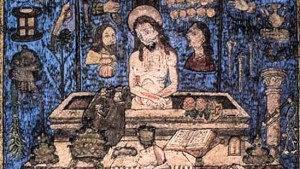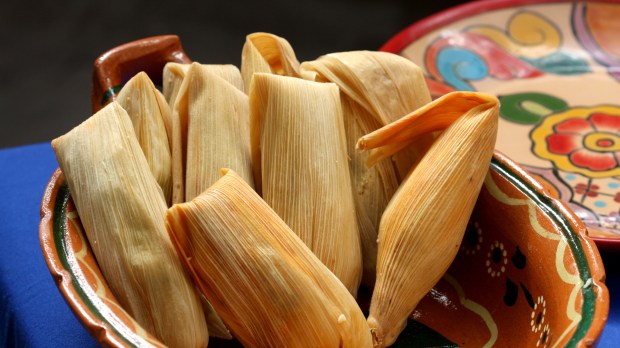February 2 is the liturgical celebration of the event we hear of in Luke, Chapter 2: “When the days were completed for their purification according to the law of Moses, [Mary and Joseph] took [Baby Jesus] up to Jerusalem to present him to the Lord.”
The Feast of the Presentation is known as another Epiphany, since the prophecy and blessing of Simeon and Anna reveal Christ as the Messiah, in the same way that the gifts of the Three Kings pointed to his divinity and lordship.

Read more:
Why it’s important (especially today) that Anna was from the Tribe of Asher
The link to the Epiphany is made especially tangible in Mexico and parts of Latin America, since February 2 is as a second chapter of January 6, or Three Kings Day.
On January 6, the feast of Epiphany or Three Kings Day, families gather in the evening to enjoy a traditional sweet bread called the Rosca de Reyes (or bread of the kings, named for the ringed shape of the bread). Hidden within the rosca is a tiny figurine of the infant Jesus. As the rosca is sliced and distributed to each member of the family (and friends who’ve come for the celebration), everyone waits to see who has gotten the slice with the Jesus figurine hidden inside. The lucky winner is traditionally the one responsible for providing tamales — on February 2, when the group will convene again. But as well, he or she is entrusted with the responsibility of “presenting Jesus in the temple” this day.
In addition to the creche, many families have a larger-sized figure of Jesus as part of their Christmas decorations. (The children of the family will rock this image of Baby Jesus and sing lullabies to him in one of the most tender moments of Christmas Eve festivities.) This same figurine is now brought to church for a blessing, but his swaddling clothes are covered over by all manner of fine robes and raiment.
And sometimes — and here we see highlighted both the blessing and the danger in so-called popular religiosity — Jesus’ garments reflect not his kingship, but something more commonplace.
A family with a sick or disabled child might present el Niño Dios (the Child-God) dressed as a doctor. Others might present him with the tilma of Juan Diego showing Our Lady of Guadalupe. More profanely, Jesus is also sometimes presented in a soccer uniform. One catechist quipped that it was a sin to present Jesus this way, but a graver sin to present him dressed in the uniform of Cruz Azul (one of the many popular national teams).
While there may be elements of the celebration that have rather strayed from the significance and mystery of the feast, still it seems to be a case of precisely what Paul VI noted when he said that popular religiosity could reflect an “acute awareness of profound attributes of God” such as his “loving and constant presence.”
And what’s not to relish about an occasion to enjoy tamales?

Read more:
America’s oldest work of Christian art was made by Aztecs in Mexico

